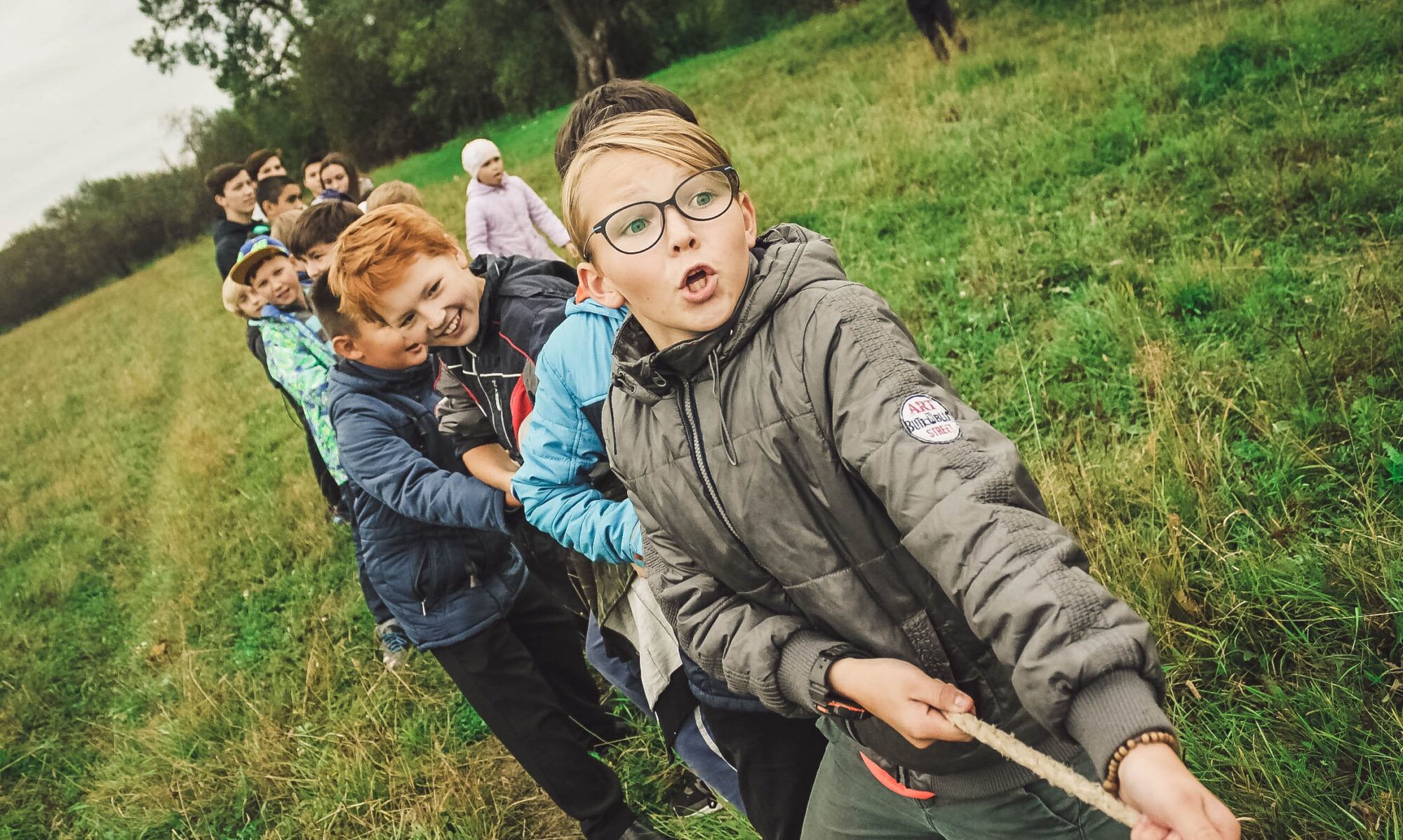Educators? We need to talk personal boundaries for remote learning.
Every day, you used to dress and pack a bag for school. You walked out the door and into a classroom, where you spent eight hours with dynamic, interesting, and beloved students, made space to listen and laugh with co-workers and administrators, and waved to families as they arrived to close out your day. And all of those steps are now blurred. Right now, we are struggling to make a distinction between home and work.
It’s an understatement to say this change in working conditions can feel overwhelming.
While it is lovely not to have to commute, and never to have to change out of comfy pants, the shift to remote teaching and learning is fraught with challenges. And one of the biggest is how to make this type of work sustainable for teachers.
In this situation, you could work for hours and hours with no breaks, forgetting about your own needs. And from what we hear, many of you are doing that! And that is not healthy or sustainable.
So: we need to set up some boundaries.
Brene Brown’s work focuses on boundaries, and she often addresses them as what is and is not okay. She says,
“Generosity cannot exist with out boundaries. Nothing is sustainable without boundaries.”
Whoa. Let that one sink in.
Nothing is sustainable without boundaries.
Teaching is already hard enough work. And now, teachers are at risk of burning out more than ever before. The conditions are *beyond* challenging. Connect with every student while simultaneously caring for your own family and monitoring this global pandemic? Sure, and let me just tackle world peace while I’m at it.
Enter: boundaries. As in:
a protected space and time
- what is okay for you,
- what is not okay for you
- and what you require others to respect about your life.
It is important that we all set boundaries with a focus on staying self and healthy. So, how do we do that?
Some recommended boundaries
Let’s dig in:
1. Designate work hours
And that includes office hours, and the hours you will be working each day.
First, think about what hours you are going to commit to work, while considering how many hours you worked before, and what your school or district is asking.
In the before-time, many teachers worked at schools somewhere between 7:45am to 3:30pm, sometimes staying later for meetings or work. But this might not work as well for you right now with your family at home. Teachers might get up early to do their planning, and then change the work hours based on this.
For me, I can do a lot before everyone in my house wakes up and I need to check in with them. I’m an early bird.
But you might designate some evening hours for planning or touching base with your colleagues or students via email. Own your night owl self! Decide what your “work hours” will be — when you will be responsive and available — and then decide when you will shut your computer for the night. Yeah, I said it. When. You. Will close your computer… for the night.
2. Design support systems
Okay that sounds hard, but we all need to figure out what is going to work for us to take care of ourselves during this time, with a full-on daily commitment to our own health as educators.
This looks different for everyone, but a few ideas are:
Get outside
Being outside is linked to so many good health outcomes for us physically and mentally. Even a short walk brings benefits.
Meditate
The science is clear here too. Meditation reduces stress, improves memory, mental health, and focus. I use the Calm app for this each day, and honestly, it has made my life and this moment a lot better. There are also lots of focused sets of meditation based on what you are working with that day. There are other great apps for this too, like Headspace, and 10 Percent Happier. Find one that works for you.
Set reminders to take breaks and move
If you are anything like me, you sit down to work, and look up hours later, dehydrated and disheveled and a little unsteady. I found an app for my phone that cues me to take a standing break every 30 minutes: Stand up! The Work Break Timer. I find it very helpful.
Also: short sessions of yoga interspersed throughout the day are lovely. The downward dog app is free for teachers and students and is my go-to for movement. You can pick the duration, the music, and what you want to work on.
Family meals
Right now, connecting with family is super important. And dinner is a good time to do that if you can. Make it screen-free and settle in. Share some highlights from each of your days. Live alone? Invite a family member or friend to dine with you over Zoom.
Check in with friends
Since everyone is homebound, this is more important than ever. There is so much strain on everyone’s mental health, especially those who are older and might live alone. Who can you call instead of text?
Play a game
I know! It can be easy to think WHO HAS TIME FOR GAMES? This is a pandemic, people! But this is the very time to find moments of humor and levity. Just last night, my daughters and I played the online drawing game Drawful 2. It was so fun! We were all in stitches within minutes — and that was certainly the first time I laughed that whole day. My daughters and I have also lately been playing Heads Up using my phone, which is quick and fun and can turn whole BIG moods around.
Read
I am *trying* to make more time for this. Right now I find my eyes closing quickly when I try to read. Right now, I am drawn to stories that take me to far away places and need to work on giving myself more time to enjoy them.
3. Simplify your life when possible
Everything is complicated right now! Even trips to the grocery store. So what can you simplify? Is it more open ended assignments or choice menus for your students, so you don’t have to collect completed work each day? Is it simpler meals? What can be pared down? This is no time to be taking on complex, arduous tasks that are avoidable in any way.
4. Let go of pressure
Cut yourself some slack. Social media will have you believing that many people are using this time to homestead and cook perfect loaves of sourdough from scratch every six hours. And sure, maybe some people are, but you my friend, you don’t have to, if sourdough feels overwhelming. See where we’re going with this? Doing home projects or working our or creating incredible art, or writing the next big novel — all lovely. None mandatory. Just seeing all of this is exhausting. There is no pressure on you to anything but what gets you through. Let go of other people’s ways of handling this moment. There is no one right way to do this. Do what works for you, and let go of pressure to produce, create, or “better yourself”. You are enough right now. You? Are frankly amazing right now.
Maintain those boundaries like a well-tended garden.
Once you have these boundaries in place, they take tending and care. There are always resources, people, and tasks that require your attention, and they are present and persistent 24/7. But the work is in recognizing this, and saying to yourself, “Not now. I will get to this, but not now. Now I need a break.”
And you might have to say no a bit.
Saying no to that extra task or meeting. Or saying what you have created is good enough. Or frozen pizza for dinner is good enough. It is all okay. You might have to communicate to your kids or spouse that this time is your time for yourself. As in, no, I am not open to negotiating whose turn it is on the iPad. I am reading.
Week to week, your personal boundaries for remote learning might change.
They might need tuning. And they might need to change based on your work load and living conditions, and that is okay.
Thinking of you all #vted. How are you setting personal boundaries for remote learning? What is one of your boundaries to help you with this moment? I’d love to hear.
Other articles on personal boundaries for remote learning:
- Teachers How Can Take Care of Our Mental Health Right Now
- Social Emotional Support in the Age of Distance Learning
- Setting Healthy Boundaries with Distance Learning (podcast)



Such timely advice! Do you have any recommendations for how to gracefully decline requests for meetings? Like, do you recommend setting office hours, or can you set parameters around it (“I have a half hour on Thursday”), or can you just say no? I’m seeing this kind of linguistic drift with the term “check-in” coming to mean hour-long meeting, and I’d love advice around making that manageable.
I turned to Brene to help me find my script/formula for this (because formulas really help me when I am feeling awkward and unsure). It goes something like, “Thank you so much for offering to check in with me. In order to honor my commitments to my students/family/personal wellbeing (whatever your reasons are), I’m not able to meet today/this week/with your team.” If you mean it, you can always add, “Please ask again next week when things might be a little quieter.” This article helped me with that:
https://www.forbes.com/sites/darrahbrustein/2017/10/09/do-you-struggle-with-saying-no-learn-how-brene-brown-does-it-masterfully/#7fd279594740
I had to make a big boundary statement at the beginning of this school closure period, and it was really hard. I worried about it afterward and still have to discipline myself to maintain it every day. I fret that people think I am shirking my responsibilities or I just can’t handle the workload, but the amazing thing is the number of people who have responded with warmth and support and respect for that decision. In the end, maybe I showed greater colleagueship and leadership by setting my boundaries than trying to do it all. I know I feel less resentful of my work, and I have much more creativity and joy to give to my students and their families now.
It takes courage and practice to set boundaries.
All the best to you.
Thank you so much Annabeth for this thoughtful comment. I think your example of model language is an important next step. It is so so hard to say no in the moment, and you sharing the words you used is inspiring. This is certainly a daily struggle for me! Thanks again for sharing this approach and wishing you well.